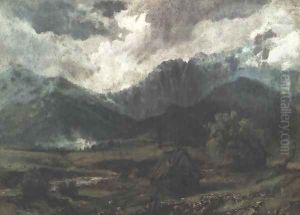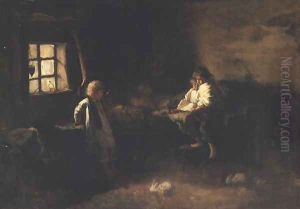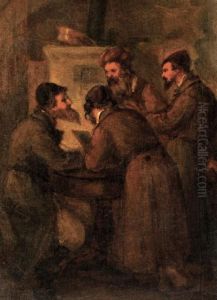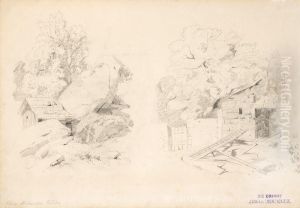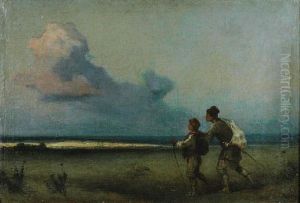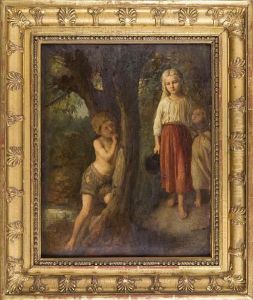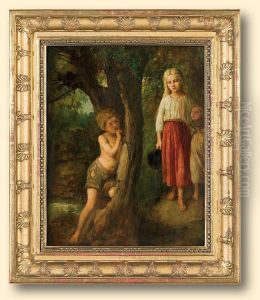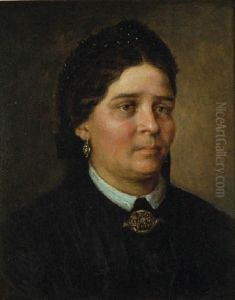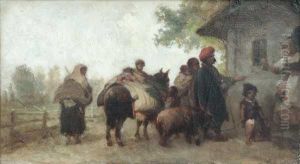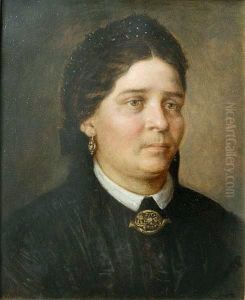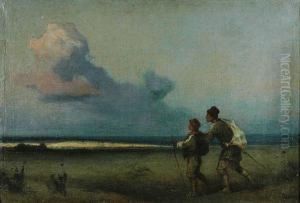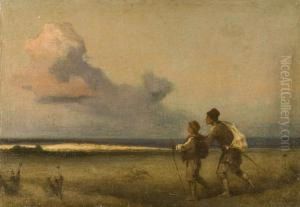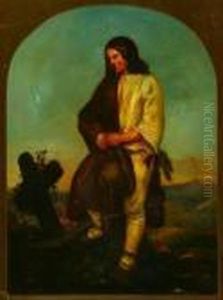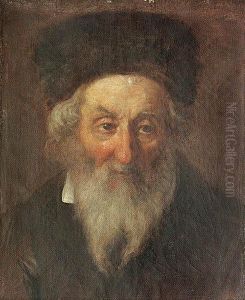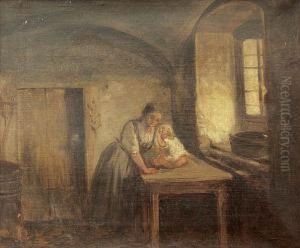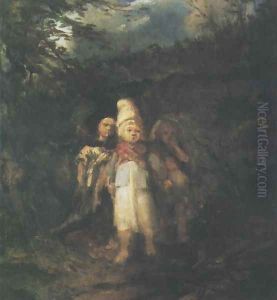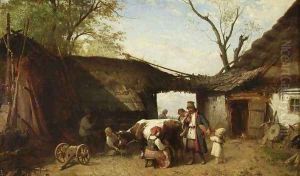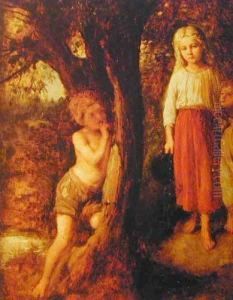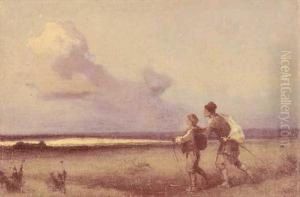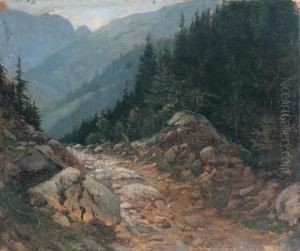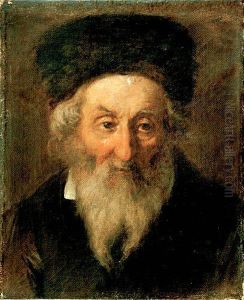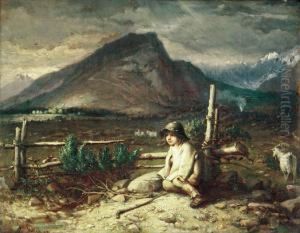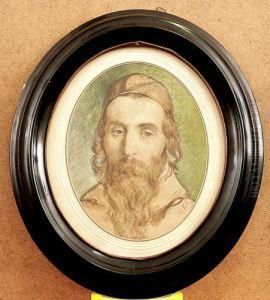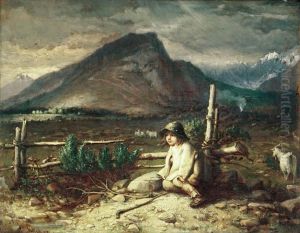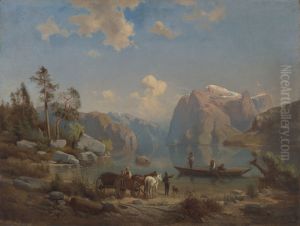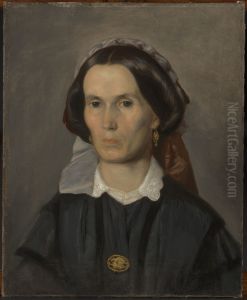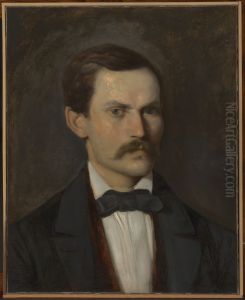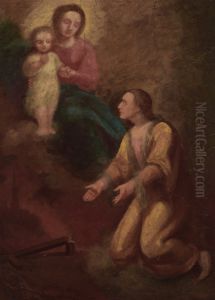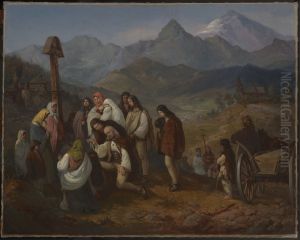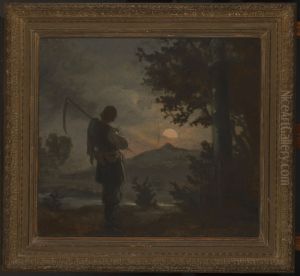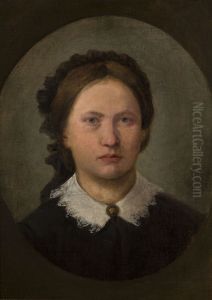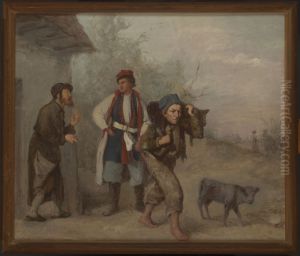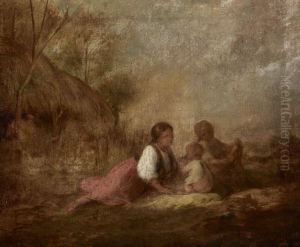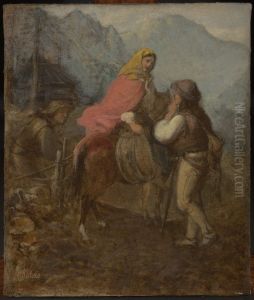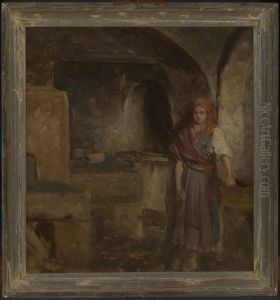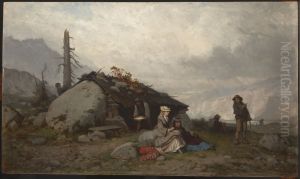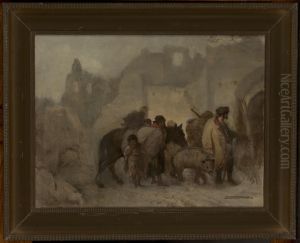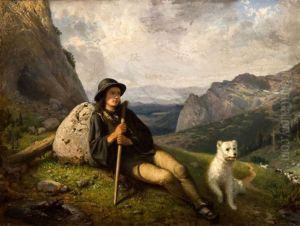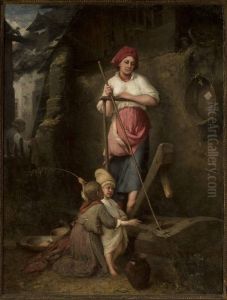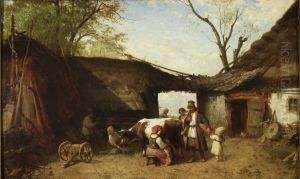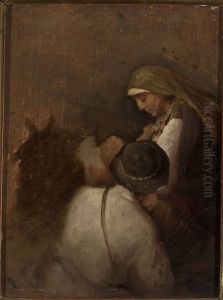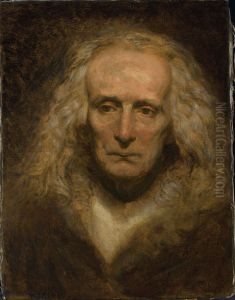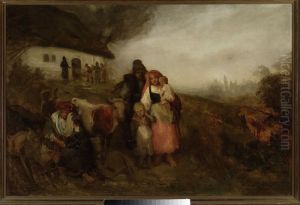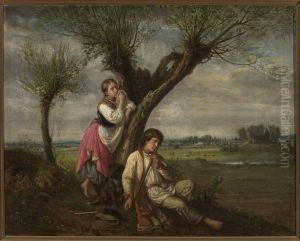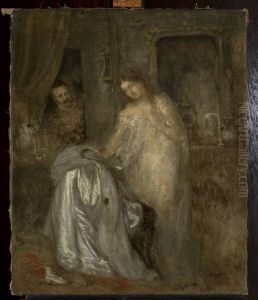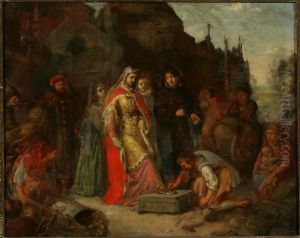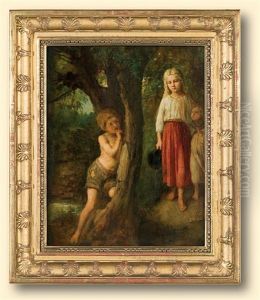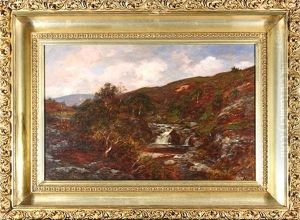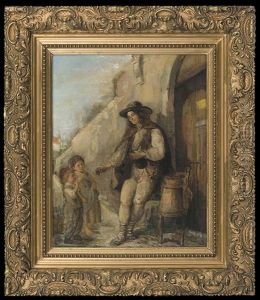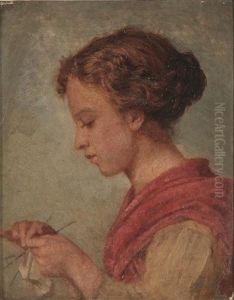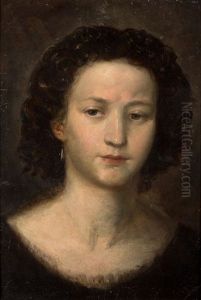Aleksander Kotsis Paintings
Aleksander Kotsis was a Polish painter known for his realistic and poignant depictions of Polish rural life and landscapes. Born on October 18, 1836, in the village of Nowy Wiśnicz, then part of the Austrian Partition of Poland, Kotsis grew up during a period of political turmoil and national uprisings.
From an early age, he demonstrated a talent for drawing and painting. He began his formal art education at the School of Fine Arts in Kraków in 1853, where he studied under the guidance of Władysław Łuszczkiewicz and Wojciech Stattler. Kotsis's mastery of technique and his sensitivity to the subjects of peasant life quickly distinguished him from his peers.
Upon completing his studies in Kraków, Kotsis continued to develop his skills, traveling to Vienna and Munich to further his artistic education. He was particularly influenced by the works of the German painters of the Düsseldorf School, who were known for their detailed and romanticized landscapes. However, Kotsis's approach to painting was more grounded in realism and often carried a social commentary about the life of Polish peasants.
Kotsis's works often portrayed the harsh realities and simple beauty of rural existence, earning him recognition as one of the key figures in the Polish genre of peasant-themed art. His paintings are characterized by an intimate knowledge of the countryside, a compassionate portrayal of its inhabitants, and a skillful use of light and shadow to evoke mood and atmosphere.
Tragically, his career was cut short by his premature death. Aleksander Kotsis died on August 6, 1877, in Kraków at the age of 40. Despite his brief career, he left behind a significant body of work that continues to be celebrated for its contribution to Polish national art and for its honest depiction of 19th-century peasant life. Kotsis's legacy is preserved in Poland's national museums and galleries, where his artworks remain a testament to his talent and empathy for the common folk.
